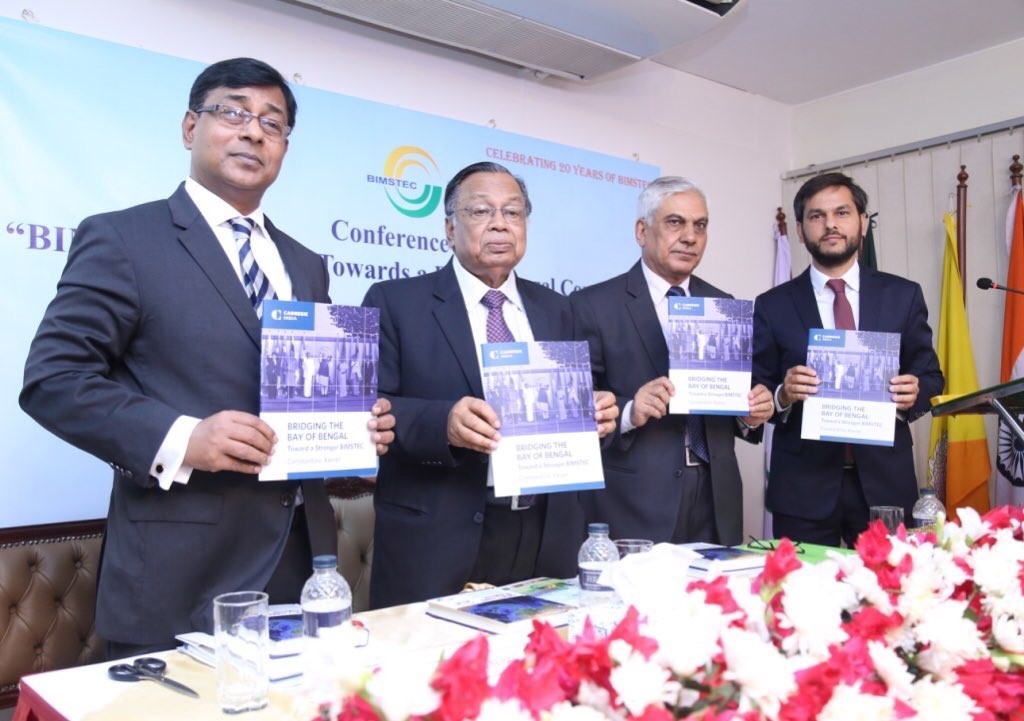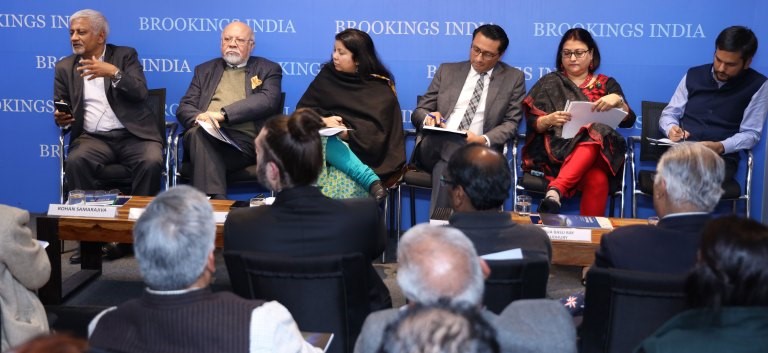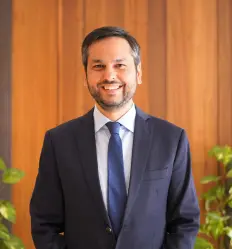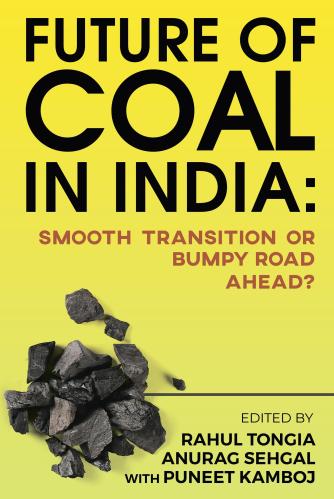Content from the Brookings Institution India Center is now archived. After seven years of an impactful partnership, as of September 11, 2020, Brookings India is now the Centre for Social and Economic Progress, an independent public policy institution based in India.
The following is an edited and revised transcript of the podcast, The Bridge Project, Season 1, Episode 8: Comparative Politics & International Relations: Lessons for Indian Foreign Policy, featuring Dr. Constantino Xavier and Prof. Ian Hall. Please check the corresponding audio for the original version. Original transcript prepared by Umika Chanana, Intern, Foreign Policy and Security Studies, Brookings India.
Q. Given your expertise in South Asia, by making use of the framework established within comparative politics how do you make sense of India’s South Asian policies in recent times? To what extent does it differ for various regional settings such as BIMSTEC, BBIN, and SAARC?
Constantino Xavier: The big puzzle that we all face is why are institutions and regional organisations in this region, South Asia so weak? I think that the recent response to the COVID-19 crisis in South Asia reflects that. We’ve been talking a lot about the South Asian Association of Regional Cooperation (SAARC) over the last few weeks, but if you look closer, the various funds, online meetings, and conferences and initiatives that Prime Minister Narendra Modi and India have been pushing for are not actually SAARC initiatives.
SAARC is a regional organisation that has its headquarters and Secretariat in Kathmandu and it has only been marginally involved in crafting a response to this regional crisis over the last weeks. That becomes even more apparent if you look at other regions such as the European Union (EU), which recently announced a €500 billion economic stimulus planned for their member states.
The Association of Southeast Asian Nations (ASEAN) has had its problems over the last few weeks but has certainly more of a coordinated approach compared to South Asia, and even the African Union (AU) has had very interesting responses to this crisis, coordinated across Africa. So, sometimes people have a problem with institutions and here in Delhi, you often hear this – why do regional organisations even matter when we can do everything bilaterally; this is some sort of Western idea that works across the European Union but doesn’t work here.
If you look at the literature on international organisations, historical institutionalism, neo-functionalism, regimes theory, and multilateralism, this goes back to the 1940s and 50s, but I think it is still very timely and it tells you that institutions don’t replace state sovereignty and independence but support state action by bringing a variety of states in a certain region together to overcome collective action problems.
So, in the end, if you cooperate through institutions, everyone should be better off because institutions offer a forum for experts to meet, to share information, to share data for instance during the COVID-19 crisis, to set an agenda, to develop best practices, to train together in terms of preparing for example for disaster management, or to set the terms of trade, if you’re looking at economic regional cooperation. Therefore, you work on low politics first, which means technical issues like trade and transportation, and generally leave high politics such as security, defence, and military towards the end. The EU, for example, today is still not strong enough to have a joint diplomatic and military approach to most issues.
So why has this institutionalised integration process not worked in South Asia? Three factors stand out. First, the Indian geographic, economic, demographic pre-dominance. India is the central state, so it makes it more difficult for other states to work with India as they are suspicious of its intentions more than that of any other state in South Asia. Second, the India-Pakistan dispute, which has derailed SAARC several times and continues to do so. And third, the post-colonial sovereign status- focussed approach to international politics in this region, where security weighs heavily and issues like trade interdependence are generally neglected.
There are good news and bad news with regard to institutions in the region. The good news relating to your question is that we started in the 1980s with SAARC, which is a top-down intergovernmental regional organization. In the 1990s, we saw the emergence of the Bay of Bengal Initiative for Multi-Sectoral Technical and Economic Cooperation (BIMSTEC), which actually began as a sub-regional cooperation organisation, which means that it is becoming closer to focus on technical areas and economics rather than SAARC, which is always driven as a political leaders forum and top-down inter-state organisation, and conversely less of a technical cooperation system.
And these days, as you rightly mentioned, we have something called the BBIN (Bhutan, Bangladesh, India, Nepal) initiative which goes back again to the late 1990s. It has picked up steam since 2014, and is an even more flexible instrument of cooperation between these four states, focussed very specifically on water, transportation, and energy. So on these three areas you have a very focussed cooperation between experts, which not surprisingly has been leading to a variety of successes.
The bad news is that, despite all this, there is this consistent focus and obsession with Pakistan, especially in India. You have very little investment in the international institutions, in terms of the budgetary allocations, the deputation of Indian experts to the secretariat in Dhaka, for example for BIMSTEC. Finally, while I have argued that the region’s relative importance has increased in India’s foreign policy priorities, at the same time you have a persistent focus on bilateral shortcuts and what I call bilateralism, which I think is undermining the multilateral logic of regional cooperation through institutions.

Q. Dr. Xavier, in your recent paper you’ve mentioned that South Asia and neighbourhood studies have been neglected for decades at Indian universities and that the annual growth rate of foreign students from the neighbourhood has decreased from 30% to 9% in the last 7 years. India is losing its attractiveness, which poses a challenge for India’s regional connectivity. Meanwhile, China is a new destination attracting students from South Asia, including India’s close allies like Nepal and Sri Lanka. What do you think are the reasons for this and how can the academic community collectively address the challenge? What changes do you see in India vis-à-vis China’s political behaviour in terms of promoting regional studies?
Constantino Xavier: Let me start this time with some good news. I think this project, your podcast series, is also the outcome of students who study at South Asian University here in Delhi which is a SAARC initiative dating back to 2010. In just ten years, this has created a new sense of regional studies, which is very welcome. Recently, I have noticed in several private universities in India a rising number of students from Nepal, Sri Lanka, etc. So, there is good news and certainly the best news, which I’ve been saying with some irony, for India’s focus on South Asia and the neighbourhood has been China’s new presence in India’s neighbouring countries.
Unfortunately, it took the quite sudden and grand entry of China on a variety of dimensions, such as diplomatic, economic, military cooperation, which is unprecedented in the region, for Delhi and the larger ecosystems of government, think tanks, academia to start looking again at this immediate first ring of neighbouring states beyond just Pakistan. When I speak of the neighbours here, I think, we have certainly taken a lot of attention and time to focus on Pakistan continuously and we still do here in Delhi but unfortunately, that is not the same for countries like Afghanistan, Nepal, Bhutan, Bangladesh, Myanmar, Sri Lanka, and the Maldives.
So, in many ways, this is good news but there persists a knowledge gap and four factors explain how we’ve reached this point: First, we have had excellent scholars on South Asia until today but they are all 60 years old and plus, so there is a generational gap in Indian academia where I think, you’ve had Prof S.D. Muni on this podcast too, for example. He is a brilliant expert on the domestic dimensions of Nepal and Sri Lanka. You have had bureaucrats who’ve served in these countries and know them in and out. If you look at the number of correspondents that newspapers like The Times of India used to have up until the 1970s in countries such as Burma, Sri Lanka, and Nepal, it was impressive. Today, you can count and see that maybe with the exception of The Hindu in Sri Lanka, there is no full-time correspondent in these neighbouring countries, which reflects this neglect.
Second, it is also a normal generational development. For instance, in the India-Nepal relationship, the first elected Prime Minister of Nepal, Bishweshar Prasad Koirala and many in his prominent family, the Koiralas, grew up and went to school in Patna, Bihar. General S.K. Sinha who went on to become India’s ambassador to Nepal in 1990 had known these Nepali families and leaders for decades, which represents very close ties across Bihar, India, and especially the Madhesh, in Nepal. Naturally, as Nepal modernised, diversified its options, democratised you’ve had a diversification and these ties with India alone are less important today. Similarly, in Sri Lanka, you had the whole Tamil movement in the 1950s and 1960s with the federal party where people like Chelvanayakam, who were deeply tied to Tamil Nadu in terms of their education, their upbringing, their intellectual engagements – that also has weakened overall today. Finally, if you look at the communist movements in Burma in the 1940s and 50s, many had studied at Indian universities, especially in Kolkata. There were deep ties and they are not as deep today as they used to be.
Third, there has been a traditional reliance in India to look at its neighbourhood through the instruments of politics and security. You could take these neighbouring countries for granted because they had very few meaningful relations with other countries beyond India. China was not very present in Nepal even up to the 2000s, the United States had limited presence and was very conditioned by India. In many ways, this was India’s turf and you could take this for granted and when you take these satellite countries for granted, then you obviously don’t invest in them and it becomes an area that is not very interesting for example, for a diplomat to grow in their career or for a scholar to become more reputable in Indian academia.
And finally and I think, the most important reason, is economic detachment and that’s the reason why South Asia has been neglected systematically at least until the 1990s. If you do not have an economic interest in your neighbouring countries, you will not invest in the logic of interdependence, of cross-border infrastructure, of knowing your neighbour country beyond that high-level political knowledge and diplomatic and security relations. So that past economic autarky explains why India is actually very disconnected until today from its neighbouring countries.
It’s a paradox that you don’t have a single passenger railway link today connecting India to Nepal. It’s a paradox that whereas up to the 1960s you had more than a dozen railway links between India and East Pakistan, today you only have four with Bangladesh, and there were only two until ten years ago. You had direct flight connections between North-eastern or south Indian cities and respectively Burma and Ceylon up to the 1970s, and you don’t have any of these anymore, reflecting the abysmal air connectivity in the region.
So there is a whole new interest now thanks to China, but also because of economic interest in India with a new, modern, open market- oriented economy since the 1990s, which brings in various new incentives, both geostrategic and economic, to reconnect with these countries. That is, fortunately, leading to a very interesting debate across India and the region on what the terms of connectivity and the new region in South Asia should be.

Q. We would like to hear your closing remarks and there’s one question that we ask every speaker who comes on the podcast. So, from your respective vantage points how do you view the alignment or disagreement between academic scholars and policymakers in International Relations and practice of diplomacy?
Constantino Xavier: Yes we have some gaps between different constituencies that are trying to shape public policy and are working towards the improvement of society and knowledge production. But at the same time, I’m often concerned by this competitive idea that different industries and segments work in isolation and against each other in many ways. I like to see us all working towards the same objective, and complement each other. It is as if there are different wavelengths and modes of approaching similar problems and issues.
You have four different wavelengths that work not necessarily in harmony, nor should they, but that are all necessary: that is the government which has one wavelength, working on a daily basis, with an urgent and specific understanding of how to approach and solve policy issues. Second, you have journalists, who play a very important role in allowing professors, scholars, think-tankers to access information. Without them, many on the foreign policy beat covering the Ministry of External Affairs and other agencies every day, half of my own work would not be possible.
Third, you have experts in civil society, private sector companies, industries, businesses, NGOs across different sectors who are domain specialists in a variety of issues such as energy, health, defence or migration. They are the real sectoral experts, even if some take on an activist mode, whether for profit or ideology, that is fine as long as it is clear. Finally fourth, you have academics and scholars at universities who have the deepest insights with the luxury of exploring the complexity of a certain issue, do a deep dive which none of us – I’m at a think tank for example – can afford to do because of other constraints.
These are four complementary approaches, and we all need each other. I look at myself at a think tank and what we do is try to facilitate, translate some of these issues and put these different wavelengths in some form of a joint setting, where we can communicate with each other, exchange ideas and shape each other. It is in the interest of the government to benefit from what an academic is doing and similarly, it should be in the interest of a journalist, but also an academic and think-tanker to be connected to understand what and why the government is doing something.
In some cases, if you get the chance, based on your knowledge and ability to translate it to the real world of practice, you can also have impact and improve public policies with evidence-based expertise, whether that comes from studying archival records and maps on the Himalayas or from analysing daily mass data trends in India’s electricity generation, distribution and consumption. In India we have now a fascinating evolving architecture of this knowledge production, which is all being shaped and still developing – so despite what you may hear, Delhi is a good place to be in these days, if you wish to have impact and be part of the change in whichever direction you deem best.



Commentary
Interview: On India’s neighbourhood, regional institutions and Delhi’s policy space
June 9, 2020